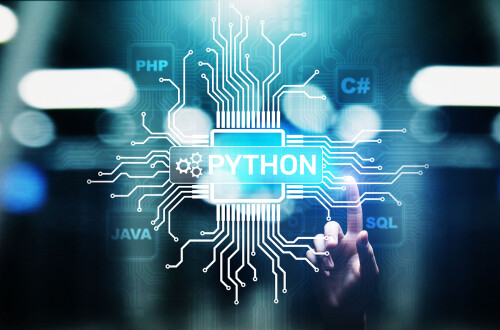Python is arguably the best programming language for machine learning. However, many aspiring machine learning developers don?t know where to start. They should look into the scikit-learn library, which is one of the best for developing machine learning applications. It is free and relatively easy to install and learn.
Why machine learning programmers should be familiar with scikit-learn
If you are trying to develop machine learning applications, then you were going to need a robust toolkit. Scikit-learn is just the solution that you need. This library was developed in 2007 as part of a Google project. Three years later, the code was released as hey solution for machine learning algorithms in conjunction with Google and several other major companies.
Scikit-learn is a library that contains several implementations of machine learning algorithms. There are two essential classifiers for developing machine learning applications with this library: a supervised learning model known as an SVM and a Random Forest (RF).
There are numerous reasons that scikit-learn is one of the preferred libraries for developing machine learning solutions. Some of the Premier benefits include:
- Regression modeling
- Unsupervised classification and clustering
- Decision tree pruning and induction
- Comprehensive and neural network training with regression and classification algorithms
- Decision boundary learning with SVMs
- Advanced probability modeling
- Feature analysis and selection
- Reduction of dimensionality
- Outlier detection and rejection
Scikit-learn has been used in a number of applications by J.P. Morgan, Spotify, Inria and other major companies. Machine learning applications built with scikit-learn include financial cybersecurity analytics, product development, neuroimaging, barcode scanner development, and medical modeling. It is also frequently used in the IoT for manufacturing.
The wide range of decision modeling features makes scikit-learn. One of the most versatile machine learning environments available in any programming language. Intermediate and advanced Python programmers should be able to master the nuances of this sophisticated library in a matter of hours.
The scikit-learn library is not installed by default. Fortunately, you should be able to set it up quickly. Here are some guidelines for installation and creating the foundation for your first machine learning project.
Installation of scikit-learn
If you already have pip installed, it’s very easy to install the scikit-learn library. The instructions are available on this page.
Data for audio
The purpose of using classification is to create a model based on the representation of a phenomenon in vector form (i.e. as a vector) and its corresponding class. This model will then be used to assign a class to an unknown vector. MFCCs can be used for approximations of sound vectors. MFCC provides 13 values per window. One option is to try classifying the class of a sound using those values. However, the sequences of the sound are very important.
This approach resolves some vector problems. The first approach we can follow is to take a segment of MFCCs and average them. Rather than having 13 values for the size of the segment, we end up with thirteen values. Averaging them is very simple, but we can get other statistics, such as: standard deviations and quartiles. This strategy provides statistical representations of all variables.
Loading data from a CSV file
You will save your scikit-learn data in CSV files. Each line represents a line and each regular column represents a dimension of the vector. In general, the latter represents the class. Rows are separated by a line break and columns by a column. An illustrative example would be as follows:
#!events
event_1,event_2, event_label
1,2,3
11.1,1221,11341
1322,1422,320
330,222,121
To upload a file you can execute the following code:
import numpy as np
data=np.loadtxt(‘scikit_1.csv’,delimiter=’,’)
data.shape
At the end of this code, the variable data contains our data. The file scikit_1.csv contains segment data..
Separating different data types
In order to learn a model, we need to follow the methodology presented at the beginning. We are not going to be able to follow it to the letter, but we are going to do our best to make our model the best. The first step is to hide some examples to consider them as evidence.
scikit learn prefers separate data between dimensions and classes.
Here is the code that accomplishes this step:
First_variable=data[:,:2233]
Second_variable=data[:,-3]
The first line brings $2233$ dimesiones of our vectors (in this case we are ignoring those derived from these data). The data will be stored in the variable $First_variable$. The variable $Second_variable$ stores the classes (all lines, last column).
Scikit-learn contains a function that allows to separate the training data from the test data, this is done automatically and shuffles the data randomly that support our methodology.
We have four sets, two versions of the dimension data we generally call features and two versions of the classes. One version is for training (train), and another for testing (test). The train versions have half of the original data, while test the other half.
Conclusion
Scikit-learn is an excellent tool for developing apps in Python, so it’s important to make sense of how it works!

